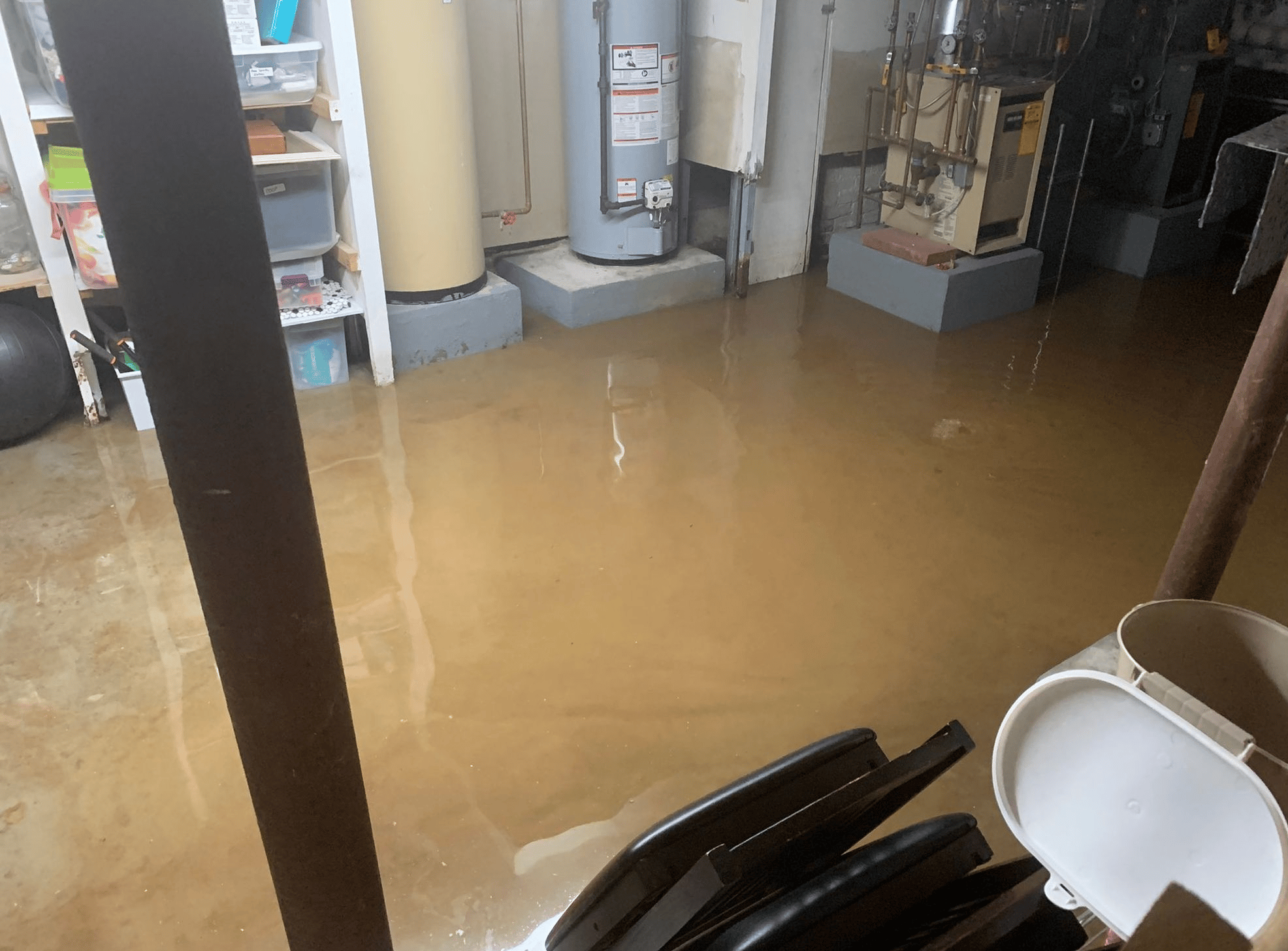Pool Table Internal Moving (After Water Damage, Flooding, Fire and Remediation)

credit: Bklyner.com
Moving a pool table after water damage or flooding can be a challenging task, as the table and its components are sensitive to moisture and can be easily damaged. Here are some of the challenges you may face.
Disassembly:
Before moving the table, it will need to be disassembled, which can be a time-consuming and difficult task. The table must be taken apart carefully to avoid damaging any of the pieces, such as the legs, rails, and felt. In addition, all the parts should be thoroughly cleaned and dried to prevent mold or mildew from forming.
Disassembling a pool table is a complex process that requires a high level of expertise and care. The first step is to remove the felt or cloth from the playing surface, which is typically attached to the table with a staple gun. It is important to take care when removing the felt, as it is delicate and can easily be torn or damaged.
Once the felt has been removed, the rails, or the cushions that run along the edges of the table, can be removed. The rails are typically secured to the table with a series of bolts, screws, or dowels, which must be carefully removed without damaging the wood.
After the rails have been removed, the legs can be detached from the playing surface. The legs are typically attached to the table with a series of bolts or dowels, and must be removed carefully to avoid damaging the wood. Some pool tables have a center support beam that needs to be removed as well.
The last component to be disassembled is the slate. The slate is the heavy, flat piece of stone or slate that forms the playing surface of the pool table. The slate is typically secured to the table with a series of bolts or dowels, and can be quite heavy, so it requires a few people to help move it. Once the slate has been removed, the table will be disassembled.
It’s important to make sure that all the bolts, screws and hardware are stored in a labeled and organized manner, to make sure they can be easily located when it’s time to reassemble the table.
Tip: Take pictures of the process rather than relying on memory
Disassembling a pool table is a time-consuming and complex task that requires a high level of expertise and care, it’s recommendable to hire professional pool table movers to ensure that the process is done safely and efficiently.
Assembly and Re-leveling:
Once the table is disassembled and cleaned, it will need to be reassembled and leveled. This process can be difficult, as it requires a high level of precision to ensure the table is assembled correctly and is level on all sides. If the table is not assembled and leveled correctly, it may not function properly and may even be unsafe to play on.
Setting the frame: The first step in assembling a pool table is to set up the frame, which includes the legs, center support beams (if any) and the inner and outer beams that hold the playing surface. These components need to be attached together using bolts, screws, or dowels and level them to ensure the table is stable.
Installing the slate: The next step is to install the slate, which is the heavy, flat piece of stone or slate that forms the playing surface of the pool table. The slate is typically secured to the table with a series of bolts or dowels, and can be quite heavy, so it requires a few people to help move it. Once the slate is in place, it should be leveled to ensure it is perfectly flat.
Attaching the rails: After the slate has been installed, the rails, or the cushions that run along the edges of the table, can be attached. The rails are typically secured to the table with a series of bolts, screws, or dowels, and should be attached with precision to ensure they are level with the playing surface.
Installing the felt: The final step is to install the felt or cloth on the playing surface of the pool table. This is typically done by attaching the felt to the table using a staple gun. It is important to take care when installing the felt, as it is delicate and can easily be torn or damaged. The felt should be stretched tight and without wrinkles to make sure the ball will roll correctly.
Fine tuning: After the table has been assembled, it will need to be fine-tuned to ensure it is level, the pockets are properly aligned and the ball returns correctly. This process may require some adjustments to the leveling of the legs, the alignment of the pockets or adjusting the tension on the felt.
It’s important to note that the assembly process of a pool table is not only time-consuming but also requires high level of expertise and care, for that reason it’s recommended to hire professional pool table movers to handle the assembly. They will be able to ensure that the table is assembled correctly and will play perfectly after it’s reassembled.
Moving the billiard table within the house:
After the table is assembled and leveled, it will need to be moved to its new location within the house. This can be a difficult task as pool tables are heavy and bulky, which can make them hard to maneuver. Additionally, the table must be moved without causing any damage to the floors, walls, or other furniture.
Moving a pool table within a house can be a challenging task due to the table’s weight and size. Here are some of the steps involved in the process:
Planning and preparation: Before moving the table, it’s important to plan the route and measure the space to ensure that the table will fit through all doorways, hallways, and staircases. Also, it’s crucial to have enough people to help move the table, as it can be heavy and difficult to maneuver.
Disassembling the table: The table will need to be disassembled to a certain degree before it can be moved. This might involve taking off legs, the rails and the slate. The disassembling process should be done carefully and with great attention, to avoid damaging the table or any other parts.
Padding and wrapping: Once the table is disassembled, it should be padded and wrapped properly to prevent any damage while in transit. This may include covering the playing surface and legs with protective blankets, and also use shrink wrap to keep all parts together.
It’s important to note that moving a pool table is not an easy task and requires a significant amount of time and expertise. It’s recommended to hire a professional pool table mover to handle the moving process, as they have the knowledge and equipment to move the table safely and efficiently. The professionals will take care of disassembling, moving, reassembling, and leveling the table to ensure that it is safe to play on once it is in its new location.
Determining the extent of water damage and possible repairs:
Depending on the extent of water damage, there may need to be additional repairs performed before or after the move such as replacing the felt, cushions or other damaged parts. These repairs can add extra cost and time to the moving process and need to be taken into account. Here are some of the steps involved in assessing the damage and determining the necessary repairs:
Inspection: The first step in determining the extent of water damage is to thoroughly inspect the table and all of its components, including the frame, legs, rails, slate, and felt. Look for any signs of water damage, such as warping, stains, or mildew.
Testing the components: Once the initial inspection is done, the next step is to test the different components of the table to see if they are still functional. This may include testing the pockets for alignment, the ball returns for proper function and the level of the slate.
Identifying the repairs: Based on the results of the inspection and testing, it’s possible to identify the repairs that need to be made. This may include replacing the felt, cushions or other damaged parts, leveling the slate, re-aligning pockets and ball returns, etc.
Assessing the cost: Once the necessary repairs have been identified, it’s important to assess the cost of making those repairs. This will include the cost of any replacement parts and the labor required to make the repairs.
Prioritizing the repairs: Depending on the extent of the damage and the cost of the repairs, it might be necessary to prioritize the repairs to be done. For example, if the table is structurally unsound or the slate is severely damaged, those repairs should be done first.
It’s worth noting that in some cases, the water damage may be extensive and the repairs may be costly, it could be that the cost of repairs exceeds the value of the table. In that case, it may be more cost-effective to purchase a new or used table rather than repairing the existing one. A professional pool table mover will have the expertise to assess the damage and advise on the best course of action for the table.
Summary:
In short, moving a pool table after water damage or flooding is a complex task that requires a significant amount of time and expertise. It’s recommended to hire a professional pool table mover to handle the disassembly, assembly, re-leveling, and moving of the table, as they have the knowledge and equipment to do so safely and efficiently.
